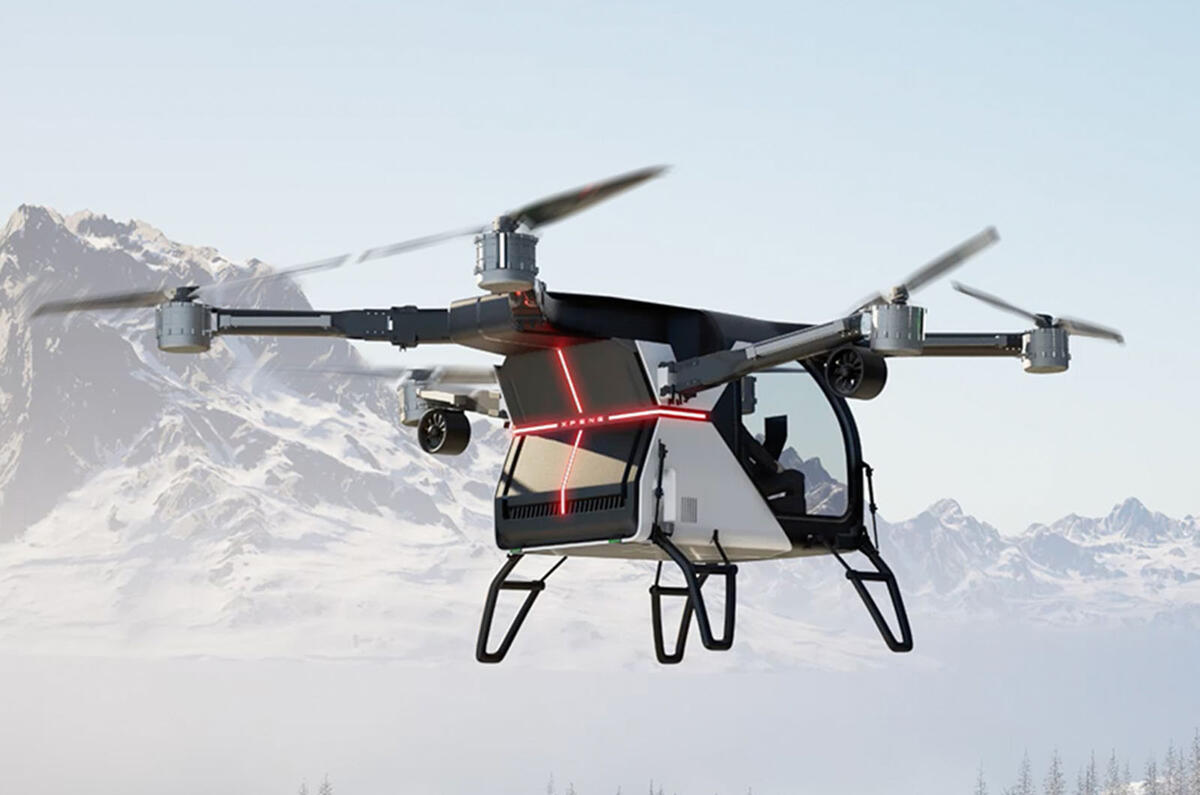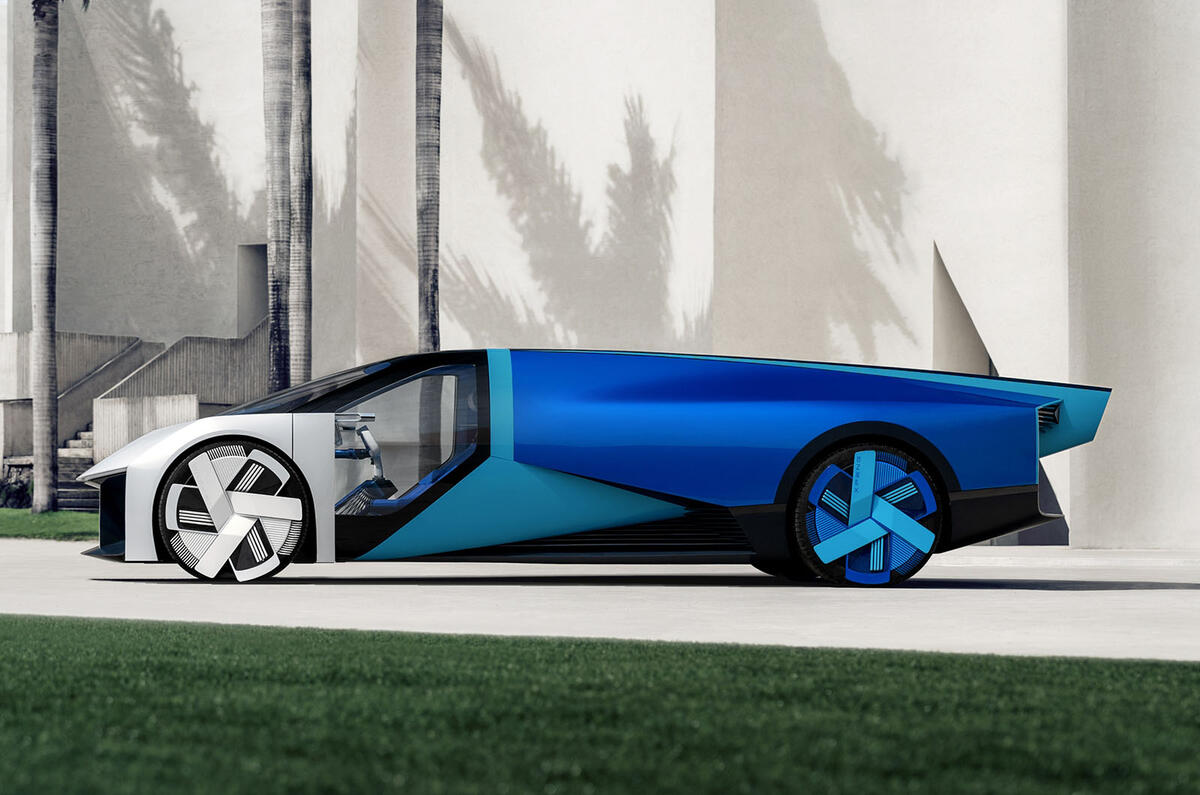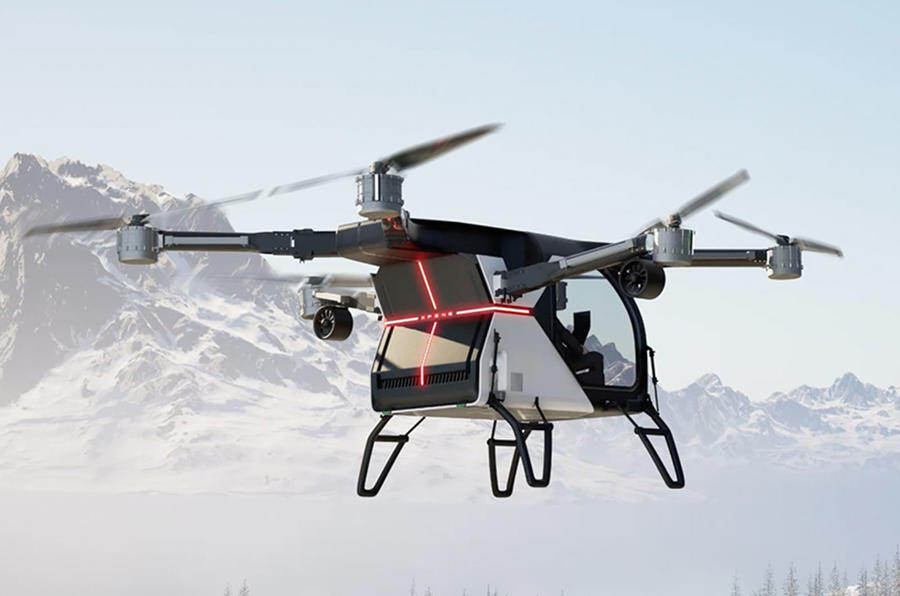Chinese company Xpeng AeroHT will begin production of a radical six-wheeled off-road truck, equipped with a modular 'flying car', later this year.
The firm will begin taking orders of the outlandish Land Aircraft Carrier in the final quarter of 2024 before customer deliveries begin in 2025 - making it one of just a few companies globally to have a 'flying car' on the market.
The Land Aircraft Carrier is effectively a vehicle of two halves: a rugged, highly capable pick-up truck with a separate, drone-style aircraft attached to its rear, which can be detached at will and piloted at low altitude for short distances.
The final design is still subject to changes, but Xpeng AeroHT founder and president Wang Tan says "all key tests of the R&D validation phase" are complete and preparations for production are under way. Final specifications are still to come.
Speaking to Autocar at CES in Las Vegas, Tan gave an idea of what to expect from the production version of the Land Aircraft Carrier: "The ground module is a very cool off-roader, but the performance is way better than other off-road cars because it has three axles and a six-wheel-drive set-up with rear-wheel steering.
"If you're on a trip and you find a fantastic, gorgeous place, you can park up, release the flying portion and drive it yourself - and you can see a different view that you've never seen before."
"We call it a luxury car", said Tan, suggesting an equivalent start price of between $170,000 and $200,000 (£134,000-£157,000).
The Land Aircraft Carrier will initially be sold in China, with its maker targeting annual local volumes of around 10,000 units per year. But Tan said "we are an international company, and in the future we will have a big market around the world".
The company is in talks with China's civil aviation administration over getting the flying module certified for public use, but has not yet begun discussions with equivalent Western bodies.
AeroHT was founded in 2013 and acquired by Xpeng in 2020. It has developed five electric cars over the past decade and is now at the point at which it is confident to launch one to market.
Employing nearly 1000 people, 85% of whom are in research and development, Xpeng AeroHT is the largest flying car company in Asia, according to Tan.
Tan said the time is right to start considering flying cars as a viable commercial prospect: "When I was a child, they were just in futuristic movies, but the supply chain of electric cars in China is world-beating.
"We have the opportunity to use the battery systems and the propulsion systems. Before we didn't have this, but day-by-day we have established this supply chain. Flying control systems are getting better and better, and the regulation now is way better than before, which supports us to have this."















Join the debate
Add your comment
And pray tell, what's the use for this flying object in everyday life?
I see LSD has finally taken off in China.